Bukit Barisan Selatan
 Bukit Barisan Selatan National Park (Taman Nasional Bukit Barisan Selatan, abbreviated as TNBBS) is a national park aimed at protecting the tropical rainforests of the island of Sumatra and its biological natural wealth. UNESCO has made the Bukit Barisan Selatan National Park together with Gunung Leuser National Park and Kerinci Seblat National Park a World Heritage Site in Sumatra’s Tropical Rainforest Heritage.
Bukit Barisan Selatan National Park has an area of around 355,511 hectares. Bukit Barisan Selatan National Park is part of the Bukit Barisan mountains. The mountainous region of Bukit Barisan has a variety of natural vegetation such as mangrove forest vegetation, coastal forests and tropical lowland forests.
Bukit Barisan Selatan National Park (Taman Nasional Bukit Barisan Selatan, abbreviated as TNBBS) is a national park aimed at protecting the tropical rainforests of the island of Sumatra and its biological natural wealth. UNESCO has made the Bukit Barisan Selatan National Park together with Gunung Leuser National Park and Kerinci Seblat National Park a World Heritage Site in Sumatra’s Tropical Rainforest Heritage.
Bukit Barisan Selatan National Park has an area of around 355,511 hectares. Bukit Barisan Selatan National Park is part of the Bukit Barisan mountains. The mountainous region of Bukit Barisan has a variety of natural vegetation such as mangrove forest vegetation, coastal forests and tropical lowland forests.
Administratively, the Bukit Barisan Selatan National Park area is located in the Lampung Province area (West Lampung Regency, West Coast Regency, and Tanggamus District) and Bengkulu Province (Kaur District). Geographically, this area is located between 4°29′-5°57′ South Latitude and 103°24′-104°44′ East Longitude.
Bukit Barisan Selatan National Park contains some of the lowland forests in Sumatra that were recently protected. It is extremely rich in terms of biodiversity and is home to three of the world’s most endangered large mammals: the Sumatran elephant (less than 2000 survive today), the Sumatran rhinoceros (total global population: 300 individuals and declining rapidly) and the Sumatran tiger (total global population of about 400 individuals).
According to the results of an analysis of rhino footprint findings as of 2019, it is estimated that there were 7-11 rhinos here.
Bukit Barisan Selatan National Park is included in the Global 200 Ecoregions, which is a ranking of the most striking terrestrial, freshwater and marine habitats on earth from a biological point of view made by WWF. This park is highlighted as a priority area for the conservation of the Sumatran rhinoceros through WWF’s Asian Rhino and Elephant Action Strategy (AREAS) program. In addition, IUCN, WCS and WWF have identified Bukit Barisan Selatan National Park as a Tiger Conservation Unit, namely the most important forest area for tiger conservation in the world. Finally, in 2002, UNESCO has selected this area to be proposed as a World Heritage Cluster Mountainous Area along with Gunung Leuser and Kerinci Seblat National Parks.
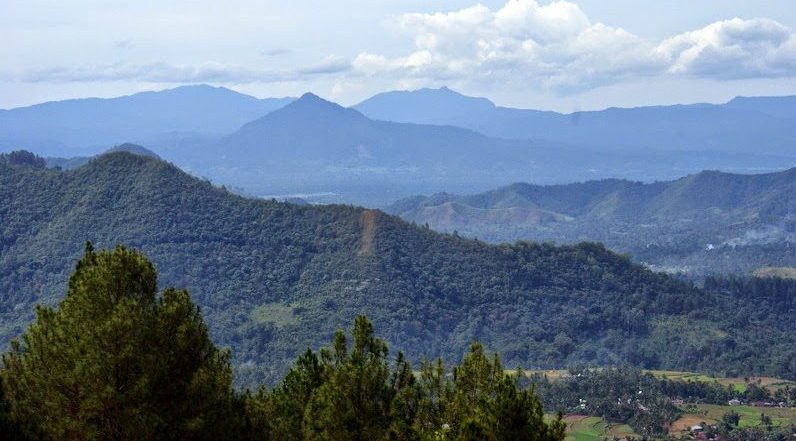 Uniqueness
Bukit Barisan Selatan National Park is one of three national parks in Sumatra that represent the highest priority for the Tiger Conservation Unit. It is also the only national park that has the largest lowland forest ecosystem in tropical rainforests in Southeast Asia.
In addition, this national park has a strategic function as a life support system area whose role is very important for the surrounding community, because this area is a catchment area. This area has at least 23 major rivers and hundreds of tributaries which carry their waters carrying life from the national park to downstream areas along the coast of Tenggamus Regency, West Coast District, West Lampung and South Bengkulu.
Uniqueness
Bukit Barisan Selatan National Park is one of three national parks in Sumatra that represent the highest priority for the Tiger Conservation Unit. It is also the only national park that has the largest lowland forest ecosystem in tropical rainforests in Southeast Asia.
In addition, this national park has a strategic function as a life support system area whose role is very important for the surrounding community, because this area is a catchment area. This area has at least 23 major rivers and hundreds of tributaries which carry their waters carrying life from the national park to downstream areas along the coast of Tenggamus Regency, West Coast District, West Lampung and South Bengkulu.
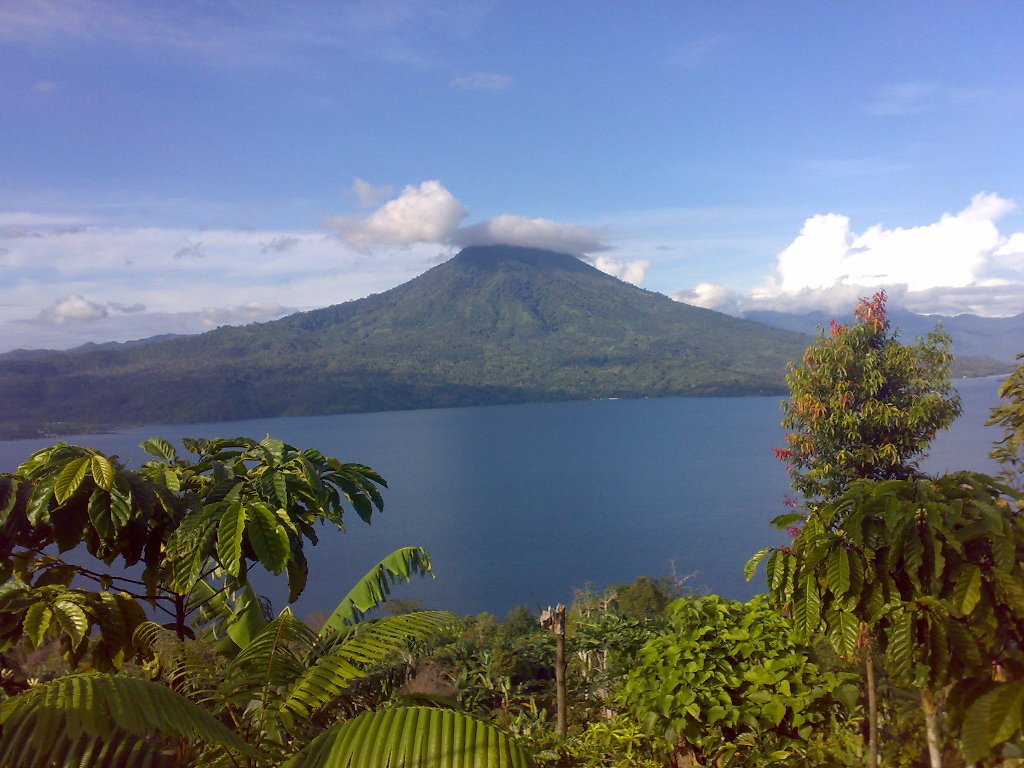 Topography
The Bukit Barisan Selatan National Park area is located at the southern tip of the Bukit Barisan mountain range, so it has a fairly varied topography, starting from flat, sloping, wavy, steep hills and mountainous with altitudes ranging from 0 -1964 m above sea level.
The eastern slope is quite steep, while the western slope towards the Indian Ocean is rather gentle. Based on the Slope Map and Soil Capability of Lampung Province, this national park area is an unstable area because it is located in the main Sumatran fault zone (Semangka Fault Zone).
Low-lying areas (0-600 m asl) and hilly (600 – 1,000 m asl) are located in the southern part of the national park while mountainous areas (1,000 – 2,000 m asl) are located in the central and northern parts of the national park. The highest peak is Mount Palung (1964 m asl) which is located west of Lake Ranau, West Lampung.
Topography
The Bukit Barisan Selatan National Park area is located at the southern tip of the Bukit Barisan mountain range, so it has a fairly varied topography, starting from flat, sloping, wavy, steep hills and mountainous with altitudes ranging from 0 -1964 m above sea level.
The eastern slope is quite steep, while the western slope towards the Indian Ocean is rather gentle. Based on the Slope Map and Soil Capability of Lampung Province, this national park area is an unstable area because it is located in the main Sumatran fault zone (Semangka Fault Zone).
Low-lying areas (0-600 m asl) and hilly (600 – 1,000 m asl) are located in the southern part of the national park while mountainous areas (1,000 – 2,000 m asl) are located in the central and northern parts of the national park. The highest peak is Mount Palung (1964 m asl) which is located west of Lake Ranau, West Lampung.
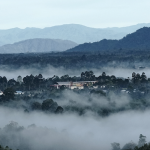
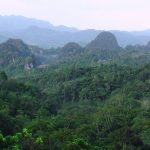

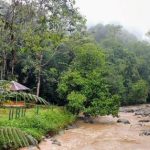
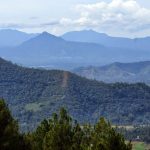
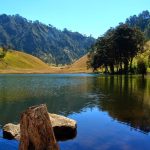
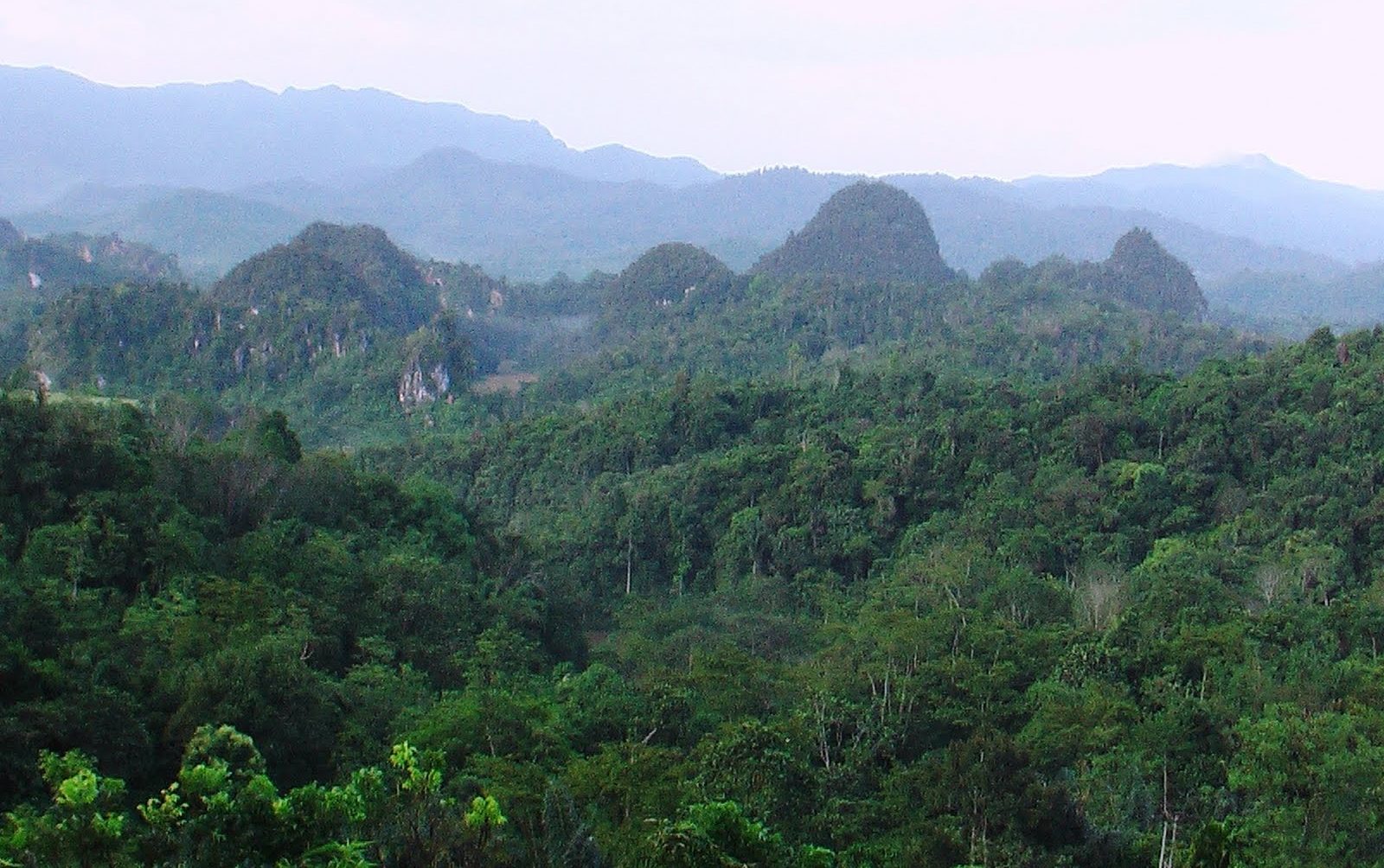 Soil and Geology
The soil in the Bukit Barisan Selatan National Park area consists of 6 types of soil namely Alluvial, Rensina, Latosol, Red-Yellow Podzolic and 2 types of Andosol. The most widely distributed soil is the Red Yellow Podzolic type which has unstable physical properties and is prone to erosion.
the Bukit Barisan Selatan National Park area consists of Sedimentary Rocks (Lower Miocene, Neogene, Old Paleosic, Alluvium), Volcanic Rocks (Recent, Old Quaternary, Old Andesite, Intermediate Base) and Plutonic Rocks (Acid Rocks). The most widely distributed rocks are volcanic rocks in the central and northern parts of the national park.
Soil and Geology
The soil in the Bukit Barisan Selatan National Park area consists of 6 types of soil namely Alluvial, Rensina, Latosol, Red-Yellow Podzolic and 2 types of Andosol. The most widely distributed soil is the Red Yellow Podzolic type which has unstable physical properties and is prone to erosion.
the Bukit Barisan Selatan National Park area consists of Sedimentary Rocks (Lower Miocene, Neogene, Old Paleosic, Alluvium), Volcanic Rocks (Recent, Old Quaternary, Old Andesite, Intermediate Base) and Plutonic Rocks (Acid Rocks). The most widely distributed rocks are volcanic rocks in the central and northern parts of the national park.
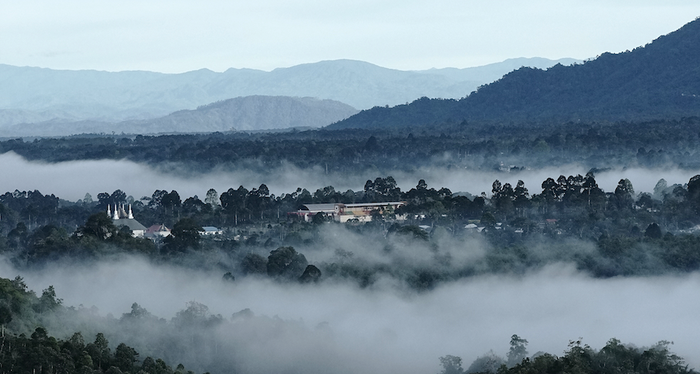 Climate Type
The Bukit Barisan Selatan National Park area is an area that can produce a climate balance. The influence of the Bukit Barisan Selatan mountain chain causes this area to have two types of climate (climate type A on the west side of the national park and type B climate which is drier on the east side of the national park) with an average annual rainfall of around 3500 mm and an average temperature between 20° – 28° Celsius. The relative humidity of the air is 80 – 90 %.
Purpose of protection
Climate Type
The Bukit Barisan Selatan National Park area is an area that can produce a climate balance. The influence of the Bukit Barisan Selatan mountain chain causes this area to have two types of climate (climate type A on the west side of the national park and type B climate which is drier on the east side of the national park) with an average annual rainfall of around 3500 mm and an average temperature between 20° – 28° Celsius. The relative humidity of the air is 80 – 90 %.
Purpose of protection
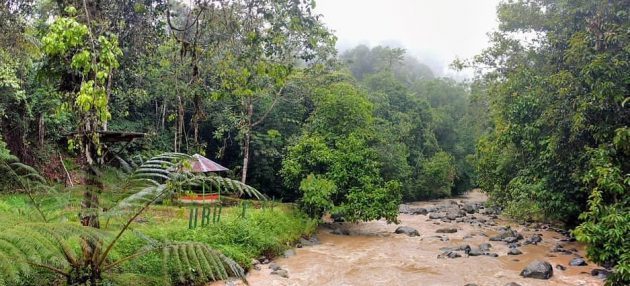
- Stop the trend of rights violations and illegal logging in the park and surrounding area.
- Reducing the number of animal hunting incidents.
- Establishing environmentally friendly livelihoods for community groups and increasing income through the Conservation Conscious Community Network (3CoNet).
- Educate and raise awareness among decision makers, law enforcers, and the general public regarding biodiversity conservation and legislation related to the Bukit Barisan Selatan National Park.
- Reviewing spatial plans and forest policies related to the West Lampung, West Coast and Tanggamus Regions so that they are in harmony with the preservation of the Bukit Barisan Selatan National Park.
(Ha.) Area
0
Species of Plant
0
Species of Mammals
0
Species of Fish
0
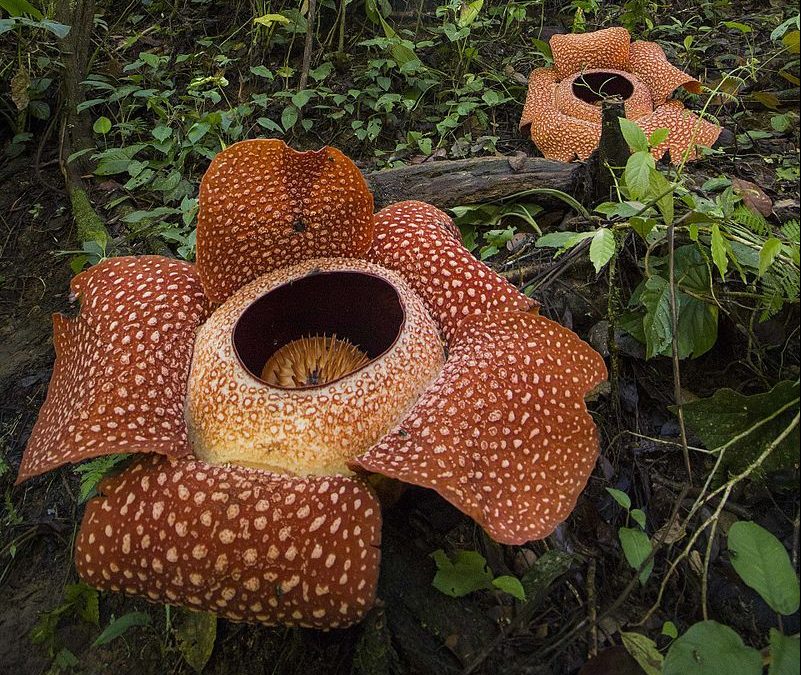 Flora
At least 514 tree species have been identified, around 98 species of undergrowth from families including Dipterocarpaceae, Lauraceae, Myrtaceae, Fagaceae, Annonaceae, Rosaceae, Zingiberaceae and others as well as 126 species of orchids, 26 species of rattan, 24 species of lianas and 15 species of bamboo living in the Bukit Barisan Selatan National Park (TNBBS) area. Another plant that characterizes this national park is the giant orchid/sugar cane (Grammatophylum speciosum).
There are as many as 157 species of plants in the Bukit Barisan Selatan National Park that can be used as medicinal plants, such as pasak bumi (Eurycoma longifolia), and island (Alstonia scholaris). This National Park is also a habitat for protected and rare endemic plant species, namely the rafflesia flower (Rafflesia sp) and 2 types of corpse flower Amorphophallus titanum and A. Deculsilvae.
Flora
At least 514 tree species have been identified, around 98 species of undergrowth from families including Dipterocarpaceae, Lauraceae, Myrtaceae, Fagaceae, Annonaceae, Rosaceae, Zingiberaceae and others as well as 126 species of orchids, 26 species of rattan, 24 species of lianas and 15 species of bamboo living in the Bukit Barisan Selatan National Park (TNBBS) area. Another plant that characterizes this national park is the giant orchid/sugar cane (Grammatophylum speciosum).
There are as many as 157 species of plants in the Bukit Barisan Selatan National Park that can be used as medicinal plants, such as pasak bumi (Eurycoma longifolia), and island (Alstonia scholaris). This National Park is also a habitat for protected and rare endemic plant species, namely the rafflesia flower (Rafflesia sp) and 2 types of corpse flower Amorphophallus titanum and A. Deculsilvae.
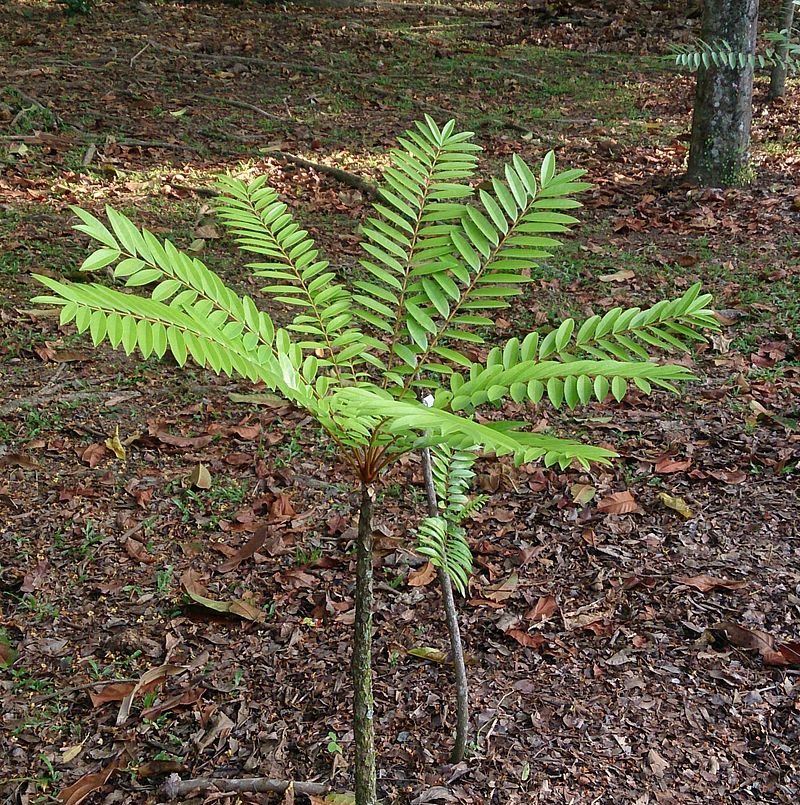 The vegetation commonly found in wetlands and coastal areas is Terminalia cattapa, Hibiscus sp, Baringtonia asiatica, Callophyllum inophyllum, Casuania sp, Pandanus sp, and Ficus septica.
Lowland rain forest is dominated by Shorea sp, Dipterocarpus sp, and Hopea sp, with undergrowth species including Urophyllum sp, Phrynium sp, Korthalsi sp, and Calamus sp. The hill rain forest is dominated by the families Dipterocarpaceae, Lauraceae, Myrtaceae, and Annonaceae with the undergrowth Neolitsea cassianeforia, Psychotria rhinocerotis, Areaca sp, and Globba pendella.
Furthermore, the lower montane rainforest is inhabited by species from the families Lauraceae, Myrtaceae, Dipterocarpaceae and Fagaceae, such as Magnolia sp, Quercus sp, and Garcinia</i > sp. While the high mountain rain forest is dominated by Eugenia sp, and Castanopsis sp. Types of sea weed found on the coast of South Sumatra, such as Sargasum gracillum, S. echinocarpum, Acanthopora specifesa, Hypnea musciformis, and Turbinaria ornata, while sea weed types Thallasis sp lives along the bay of Belimbing.
The vegetation commonly found in wetlands and coastal areas is Terminalia cattapa, Hibiscus sp, Baringtonia asiatica, Callophyllum inophyllum, Casuania sp, Pandanus sp, and Ficus septica.
Lowland rain forest is dominated by Shorea sp, Dipterocarpus sp, and Hopea sp, with undergrowth species including Urophyllum sp, Phrynium sp, Korthalsi sp, and Calamus sp. The hill rain forest is dominated by the families Dipterocarpaceae, Lauraceae, Myrtaceae, and Annonaceae with the undergrowth Neolitsea cassianeforia, Psychotria rhinocerotis, Areaca sp, and Globba pendella.
Furthermore, the lower montane rainforest is inhabited by species from the families Lauraceae, Myrtaceae, Dipterocarpaceae and Fagaceae, such as Magnolia sp, Quercus sp, and Garcinia</i > sp. While the high mountain rain forest is dominated by Eugenia sp, and Castanopsis sp. Types of sea weed found on the coast of South Sumatra, such as Sargasum gracillum, S. echinocarpum, Acanthopora specifesa, Hypnea musciformis, and Turbinaria ornata, while sea weed types Thallasis sp lives along the bay of Belimbing.
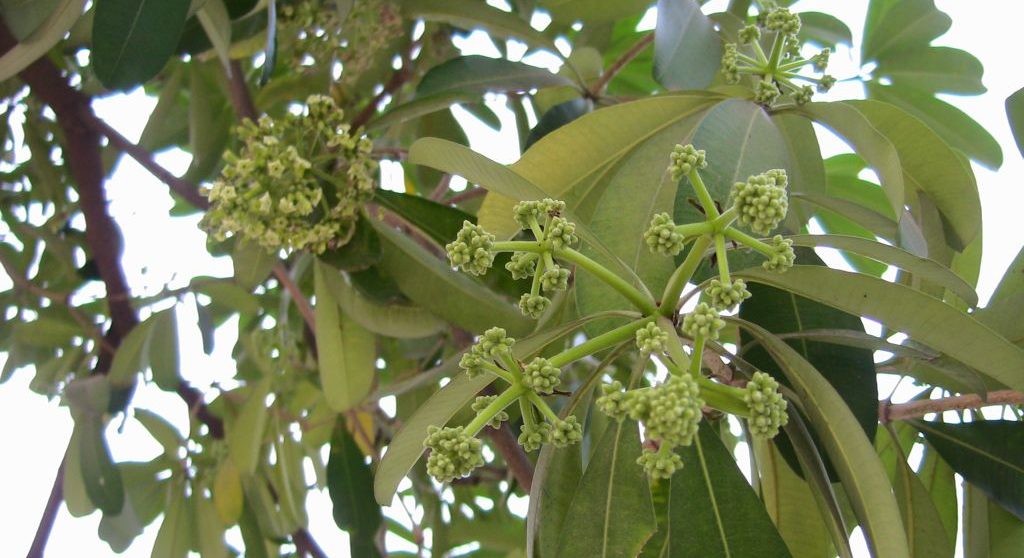 The dominant tree families in the hill rain forest are Dipterocarpaceae, Lauraceae, Myrtaceae and Annonaceae. The TNBBS area is also an important habitat for Damar Mata Kucing (Shorea javanica), Damar Batu (Shorea ovalis) and Jelutung (Dyera sp).
This national park area is also an important habitat for various plant species that have traditional uses, such as the resin-producing species of cat’s eye resin (Shorea javanica), stone resin (S. Ovalis), and jelutung (Dyera costulata). In addition, there are 11 Sumatran endemic flora, namely Bacaurea multiflora, Madhuca magnifolia, Memecylon multiflorum, Drypetes subsymetrica, Drypetes simalurensis, Ryparosa multinervosa, and others.
The dominant tree families in the hill rain forest are Dipterocarpaceae, Lauraceae, Myrtaceae and Annonaceae. The TNBBS area is also an important habitat for Damar Mata Kucing (Shorea javanica), Damar Batu (Shorea ovalis) and Jelutung (Dyera sp).
This national park area is also an important habitat for various plant species that have traditional uses, such as the resin-producing species of cat’s eye resin (Shorea javanica), stone resin (S. Ovalis), and jelutung (Dyera costulata). In addition, there are 11 Sumatran endemic flora, namely Bacaurea multiflora, Madhuca magnifolia, Memecylon multiflorum, Drypetes subsymetrica, Drypetes simalurensis, Ryparosa multinervosa, and others.
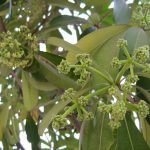
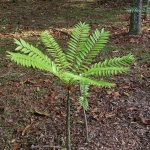

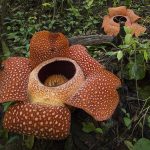
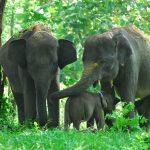
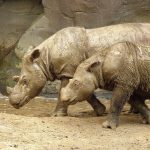
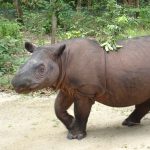
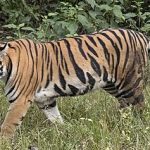
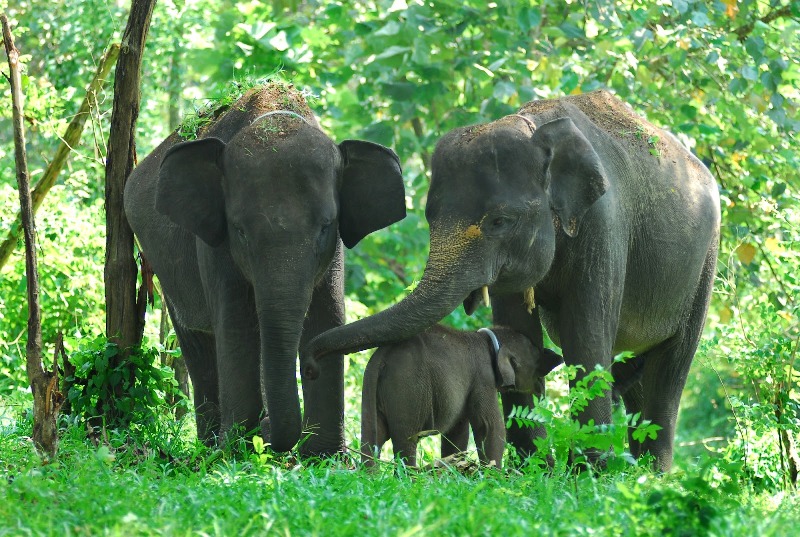 Fauna
Almost all types of fauna typical of Sumatra Island exist in this area except for the Sumatran orangutan. In general, 122 species of mammals including 7 species of primates have been identified, 450 species of birds including 9 species of hornbills, 123 species of herpetofauna (reptiles and amphibians), 221 species of insects/insects, 7 species of molluscs, 2 species of crustaceans and 53 species of fish living in the area Bukit Barisan Selatan National Park (Taman Nasional Bukit Barisan Selatan – TNBBS).
Fauna
Almost all types of fauna typical of Sumatra Island exist in this area except for the Sumatran orangutan. In general, 122 species of mammals including 7 species of primates have been identified, 450 species of birds including 9 species of hornbills, 123 species of herpetofauna (reptiles and amphibians), 221 species of insects/insects, 7 species of molluscs, 2 species of crustaceans and 53 species of fish living in the area Bukit Barisan Selatan National Park (Taman Nasional Bukit Barisan Selatan – TNBBS).
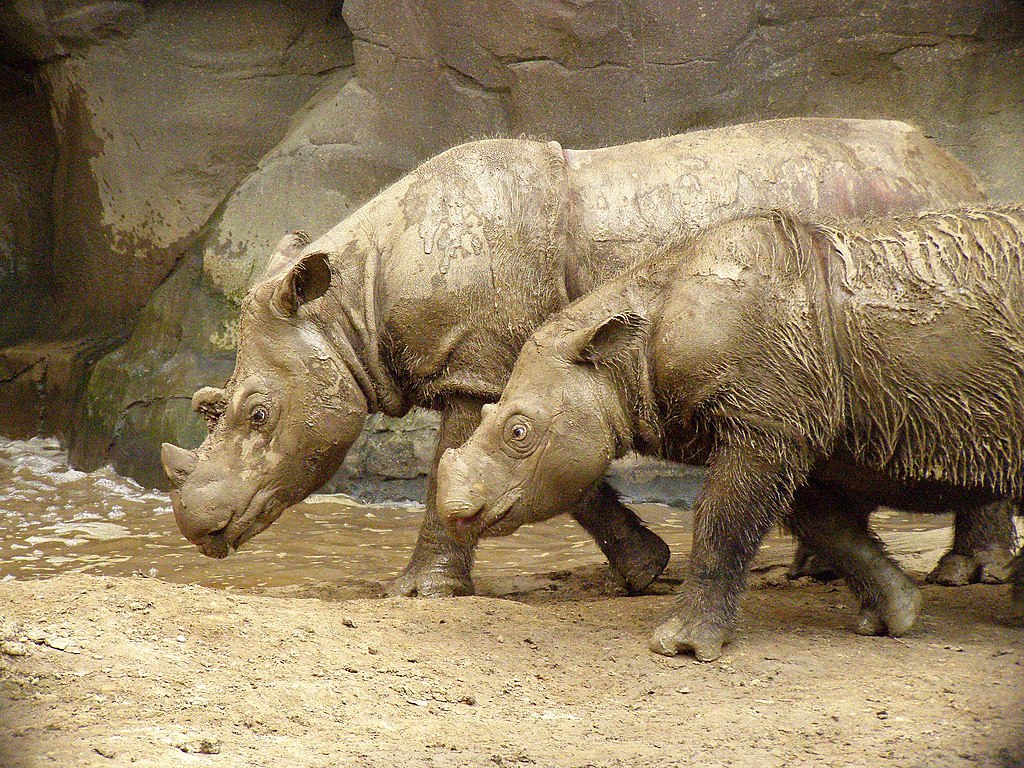 The animals that inhabit Bukit Barisan Selatan include the Sumatran rhinoceros (Dicerorhinus sumatrensis), Sumatran elephants (Elephas maximus), Sumatran tigers (Panthera tigris sumatrae), Tapir (Tapirus indicus), Deer (Cervus sp), Mouse Deer (Tragulus javanicus), Wild Buffalo (Bubalus bubalis), Deer (Muntiacus muntjak), Jungle goat (Capricorn sumatrensis), Ajak (Cuon alpinus), Gibbon (Hylobates agilis), pythons (Python reticulatus), and others.
The animals that inhabit Bukit Barisan Selatan include the Sumatran rhinoceros (Dicerorhinus sumatrensis), Sumatran elephants (Elephas maximus), Sumatran tigers (Panthera tigris sumatrae), Tapir (Tapirus indicus), Deer (Cervus sp), Mouse Deer (Tragulus javanicus), Wild Buffalo (Bubalus bubalis), Deer (Muntiacus muntjak), Jungle goat (Capricorn sumatrensis), Ajak (Cuon alpinus), Gibbon (Hylobates agilis), pythons (Python reticulatus), and others.
 Various types of apes and monkeys also inhabit excellent habitat in the Bukit Barisan Selatan National Park area, including Siamang (Symphalangus syndactylus), gibbons (Hylobates agilis), macaques ( Macaca fascicularis), monkeys (Macaca nemestrina), langurs (Presbytis cristata) and Presbytis melalophos.
In somewhat deeper areas, Sun Bears (Helarctos malayanus) are also found. Various types of hornbills (Buceros sp) and other bird species are also an inseparable part of the fauna’s wealth.
Various types of apes and monkeys also inhabit excellent habitat in the Bukit Barisan Selatan National Park area, including Siamang (Symphalangus syndactylus), gibbons (Hylobates agilis), macaques ( Macaca fascicularis), monkeys (Macaca nemestrina), langurs (Presbytis cristata) and Presbytis melalophos.
In somewhat deeper areas, Sun Bears (Helarctos malayanus) are also found. Various types of hornbills (Buceros sp) and other bird species are also an inseparable part of the fauna’s wealth.
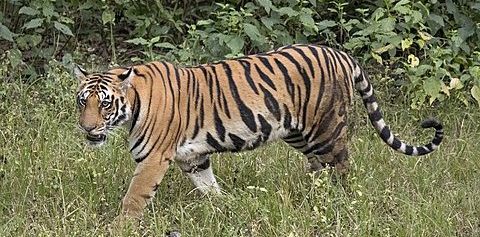 Along the south and west coasts you can find several types of turtles, including Dermochelys imbricata, Hawksbill Turtle (Eretmochelys imbricata), etc.
There are 6 types of endangered mammals according to the IUCN Red Data Book, each Sumatran elephant (Elephas maximus sumatranus) with an estimated population of 498 individuals (Hedges, et. al, 2005), Sumatran Rhino (Dicerorhinus sumatrensis) with an estimated population of 60 – 80 individuals (RPU ), Sumatran tiger (Panthera tigris sumatrensis) with an estimated population of 40 – 43 individuals (O’brien et al, 2003), Tapir (Tapirus indicus), Sun Bear (Helarctos malayanus) and Ajag (Cuon alpinus).
Along the south and west coasts you can find several types of turtles, including Dermochelys imbricata, Hawksbill Turtle (Eretmochelys imbricata), etc.
There are 6 types of endangered mammals according to the IUCN Red Data Book, each Sumatran elephant (Elephas maximus sumatranus) with an estimated population of 498 individuals (Hedges, et. al, 2005), Sumatran Rhino (Dicerorhinus sumatrensis) with an estimated population of 60 – 80 individuals (RPU ), Sumatran tiger (Panthera tigris sumatrensis) with an estimated population of 40 – 43 individuals (O’brien et al, 2003), Tapir (Tapirus indicus), Sun Bear (Helarctos malayanus) and Ajag (Cuon alpinus). 